When we left New York, the trees were still in flower—and those that don’t flower were just a bunch of sticks, really, with small nubs of green dotting their limbs.
We touched down in San Francisco six hours later after a bumpy flight, and hightailed it to Taqueria San Bruno, a Mexican restaurant just a few minutes away from the rental car center with a salsa bar and some of the largest veggie tacos I have ever encountered. (I ordered three, wanting to carbo-load for my upcoming race, but had to take the third to go.)
Driving towards the Pacific Ocean, the scenery was unsettlingly lush and verdant, in the way places without true seasons often are. We drove alongside rolling hills that brought “Bliss” to mind, the famously bucolic desktop wallpaper. (That photograph was taken in January 1998 just 50 miles north of San Francisco.) We climbed over the Santa Cruz mountains, our tiny economy rental revving hard to get up the hills, and feeling a bit like a go-cart on the sharp curves. Fragrant rainforest surrounded us on all sides, wafting in through the cracked windows. The blue-green twilight seemed to go on and on and on.
E and I ruminated on the uncanny feeling that follows rapid air travel: starting in one climate, one landscape, and suddenly turning up in another with no interstitial transition to give one time to adjust. I suggested that it felt extra sharp because we had taken off in daylight and landed in daylight, and that if we had arrived at night it wouldn’t have been quite as jarring.
The next morning, after breakfasting with my great aunt and uncle, R&R, at their retirement home, we drove down to Sunset State Beach, between fields of strawberries and dark-tilled soil. (E said “radishes” at first until I pointed out the red bits would be under the ground until they were harvested...but we can’t blame him because he was driving and focused on the task at hand.)
Signs of spring (a season!) were finally here. Wildflowers bloomed on the dunes, most vibrantly the flaming orange California poppies, Eschscholzia californica, the state flower. The air was chilled, salty fresh, and breezy.
The beach itself was littered with blue sea creatures with short tentacles and a transparent fin-like protrusion. Further inquiries revealed them to be Velella velella, also known as sea rafts, by-the-wind sailors, and little sails. They are aquatic invertebrates (cnidarians) related to jellyfish, sea anemones, and corals. Each “sailor” is apparently not a single individual but a Velella velella colony made up of all-male or all-female polyps which are all interconnected and play different roles in the colony and share food ingested by the individuals amongst the group. In other words: “From each according to their ability, to each according to their needs.”
Velella float on the surface of the ocean and catch prey with their tentacles, but for movement they are at the mercy of the winds. They are a sign of spring on the West Coast, from California to British Columbia, when strong winds push ocean waters away from the coast, allowing cold, nutrient-dense water to rise to the surface. This creates a feeding frenzy for plankton, the base of the marine food web, and in turn for the by-the-wind sailors. Coastal upwelling also helps create the fog that characterizes Northern California and sustains the remaining stands of coastal redwoods. But the same winds that bring the by-the-wind sailors more food can also turn on a dime and strand them on the beaches in vast numbers. As they dry out, they lose their coloring and become papery wisps that blow away in the wind—a process already in progress on our visit to Sunset Beach.
Although common and normal, some research indicates that mass strandings might be more common in warmer years, and therefore might increase with climate change.
Apparently, most Velella are “left-handed” but others are “right-handed” leading scientists to wonder if Velella have preferred sailing directions based on the body of water they inhabit. If you live near a beach currently littered with the little guys, you can participate in a citizen science experiment by counting the number of “left” and “right” Velella in a sample of 10.
Of course, without knowing any of the above, I went ahead and picked some of the sailors up to examine them more closely. Fortunately, I did not seem to react to the mild toxin in their tentacles that can cause itching in sensitive individuals.
While we were at the beach my mom arrived, following her grueling drive from Kansas. We lunched with R&R at one of their favorite restaurants in Watsonville. The restauranteur apparently sources all the vegetables from his own farm, and E and I loaded up: minestrone soup and garlic bread, the world’s largest platter of crudité, and, best of all, a heaping pile of fried artichoke hearts. (The “artichoke center of the world” is in nearby Castroville.) Again, the California portions bested us, and we carried away a container full of cut veg and the leftover bread.
We bade goodbye to R&R and, for a short while, my mom. (She was off to see about a tire pressure alert and walked away with four new tires—an expensive errand, but I think she was happy her business wasn’t going to the Trump-supporters back home.)
Back on Highway 1, driving south through more agricultural land, a mass of mountains rose ahead of us: the Santa Lucia Range. Never more than 11 miles from the coast, and the steepest coastal slope in the lower 48. In just a few days, I would be toiling alongside those peaks, running on the sliver of land between mountain and ocean from Big Sur Station to Carmel along this very same highway.
More soon…




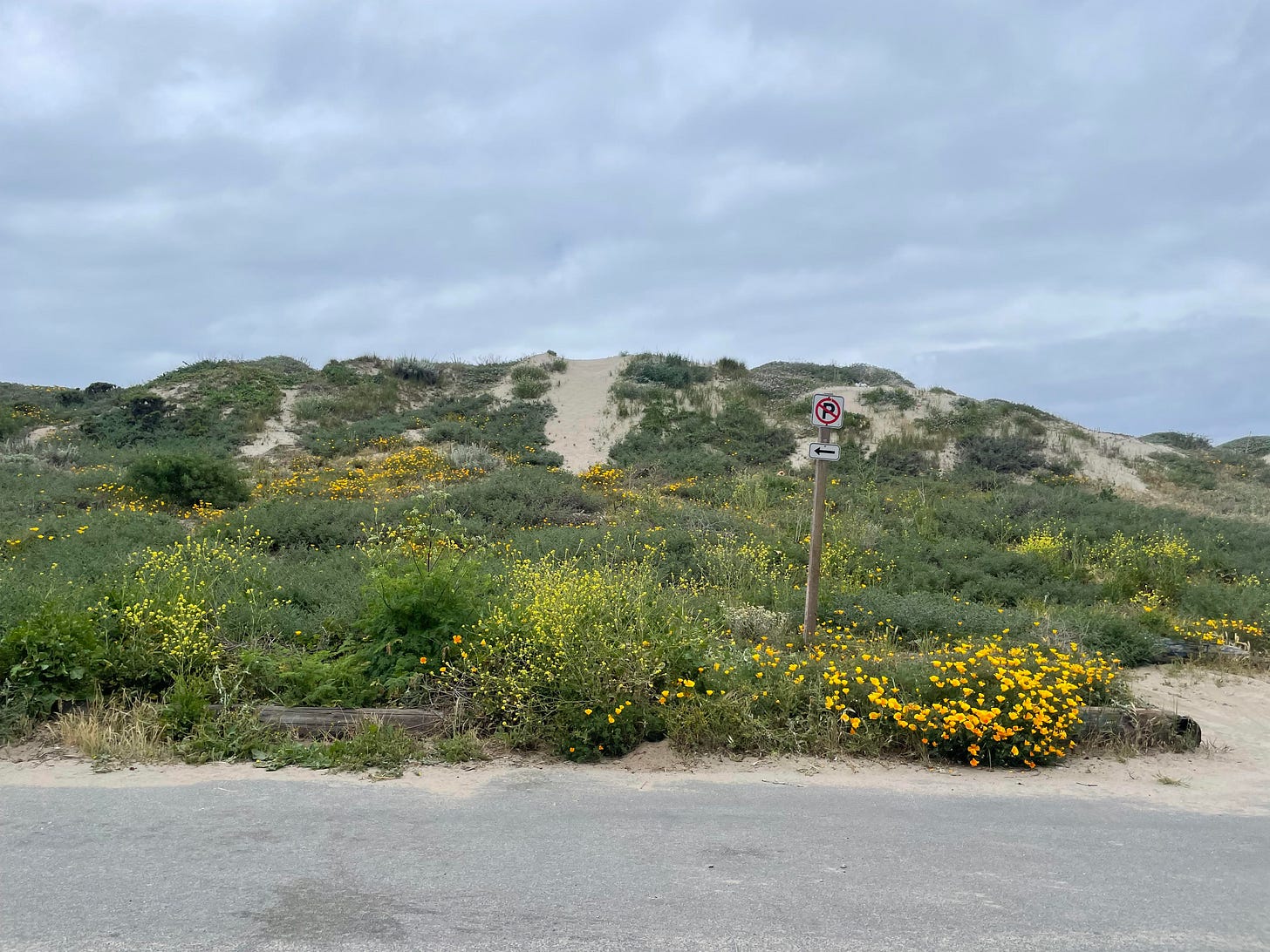
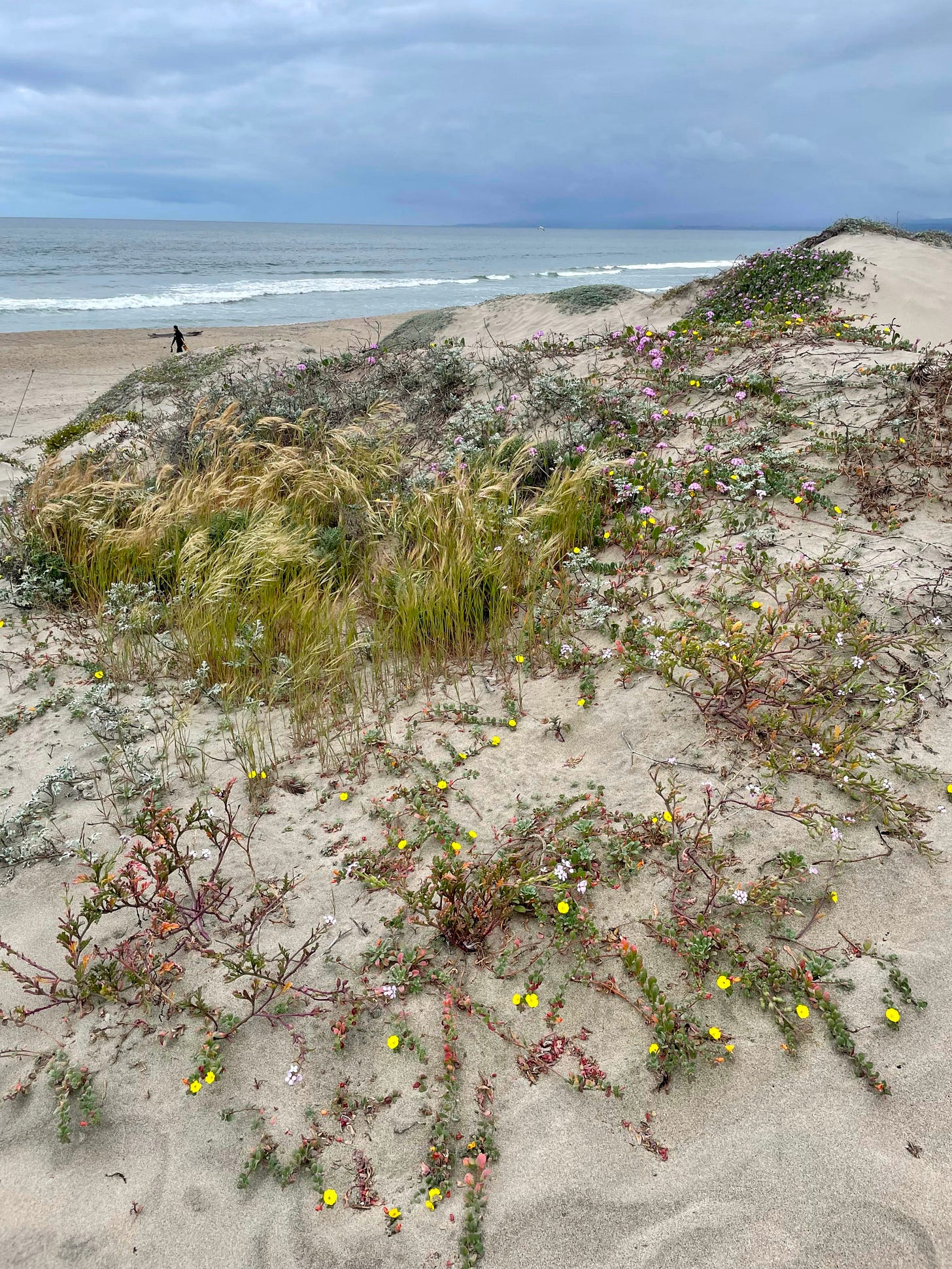
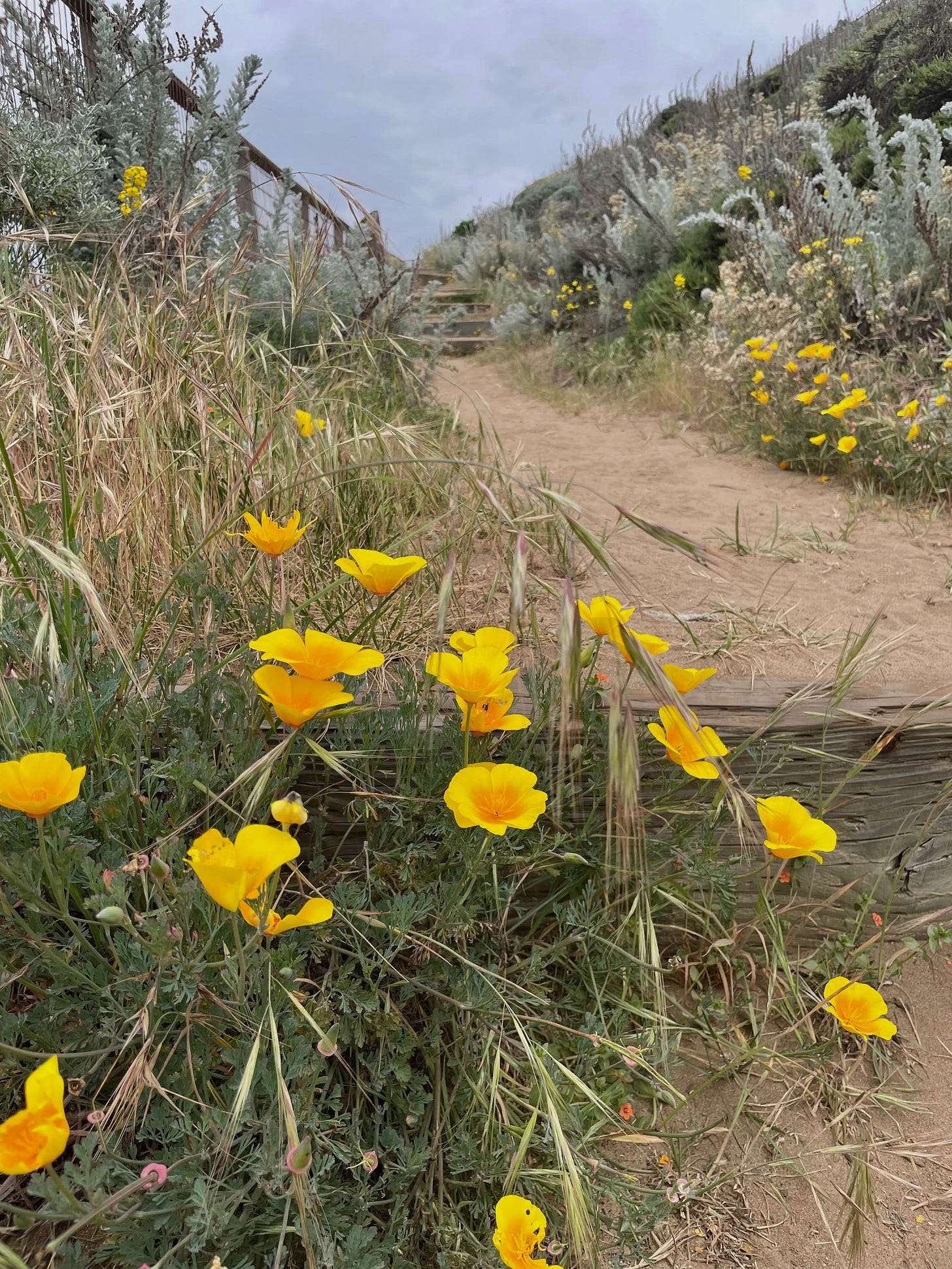
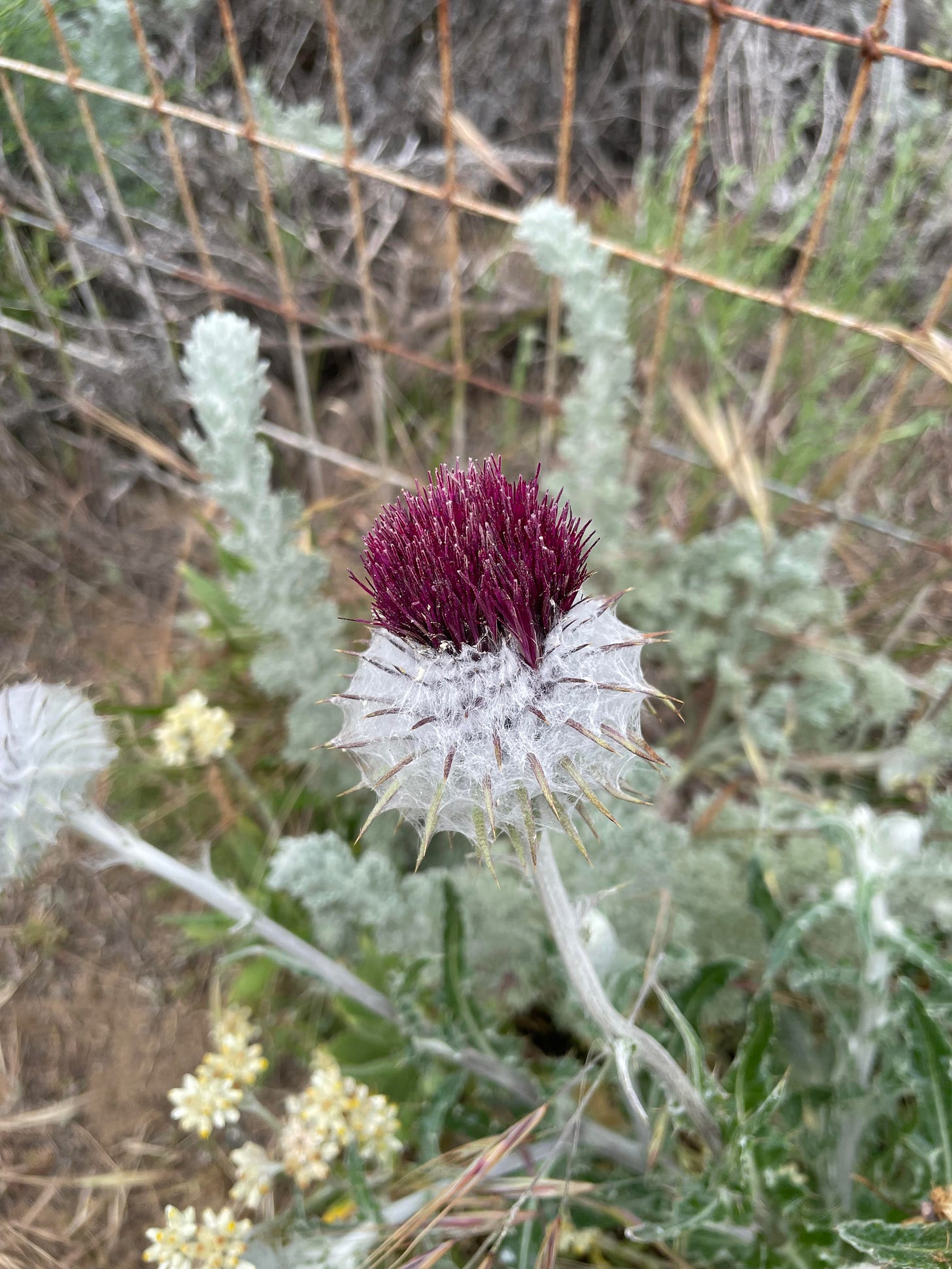

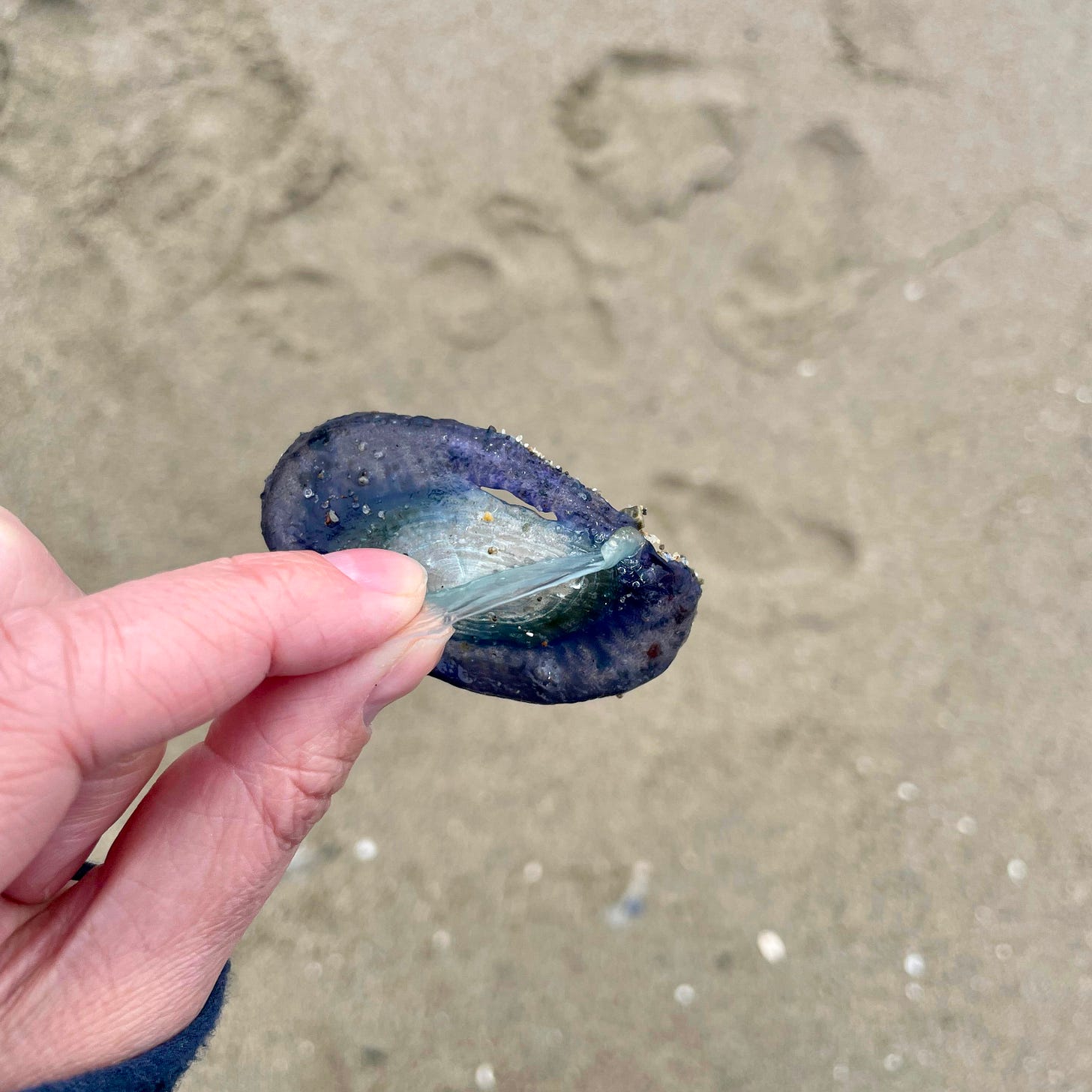
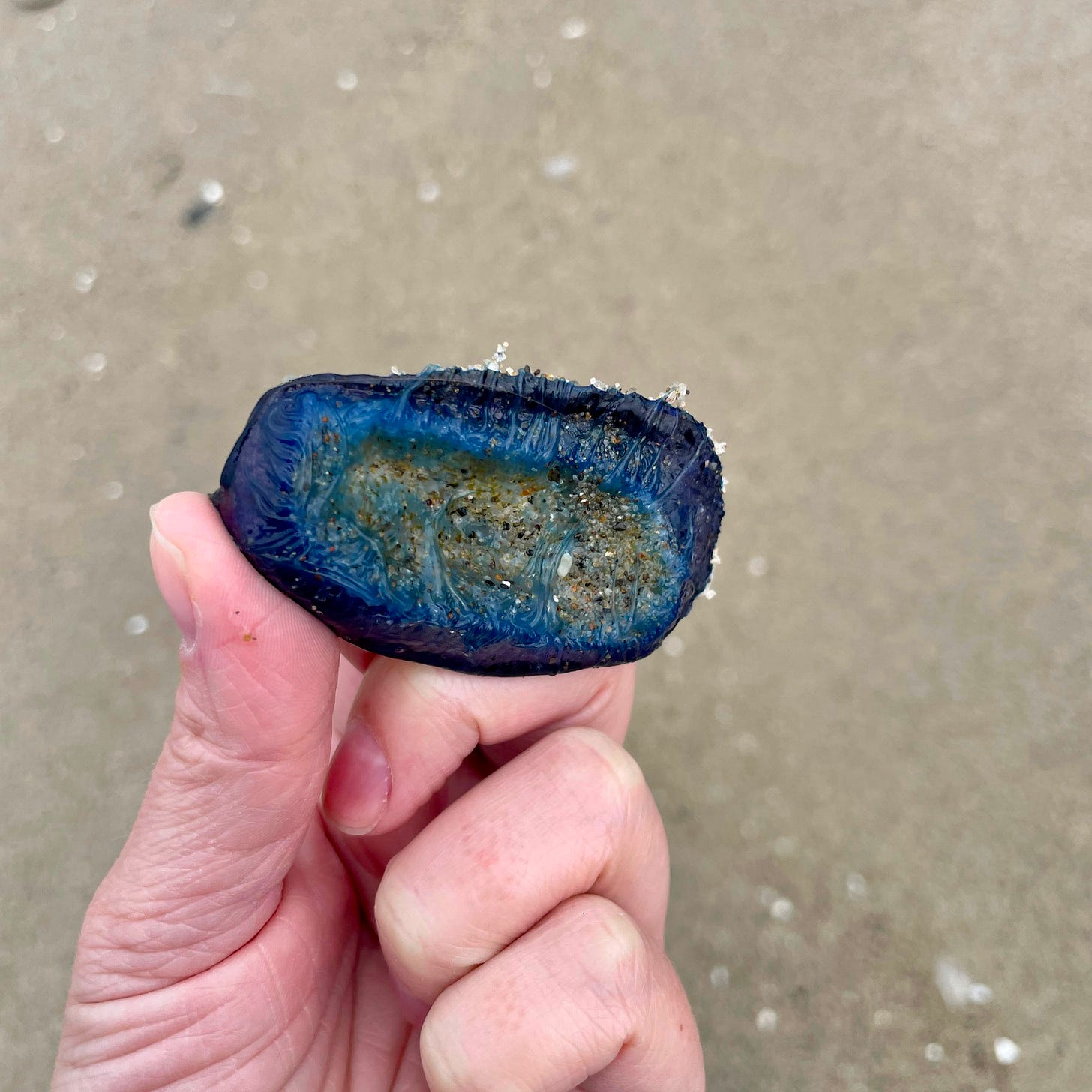
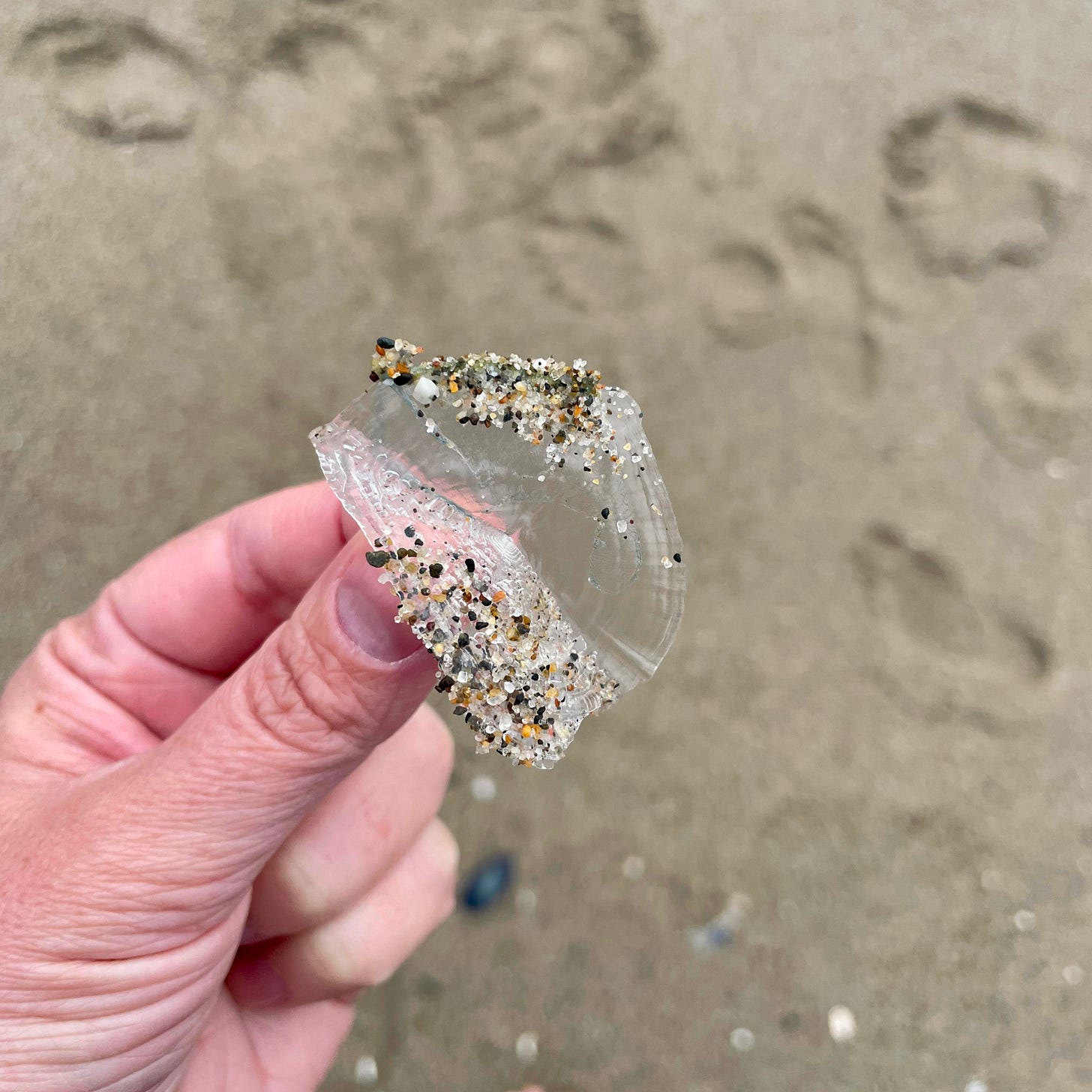
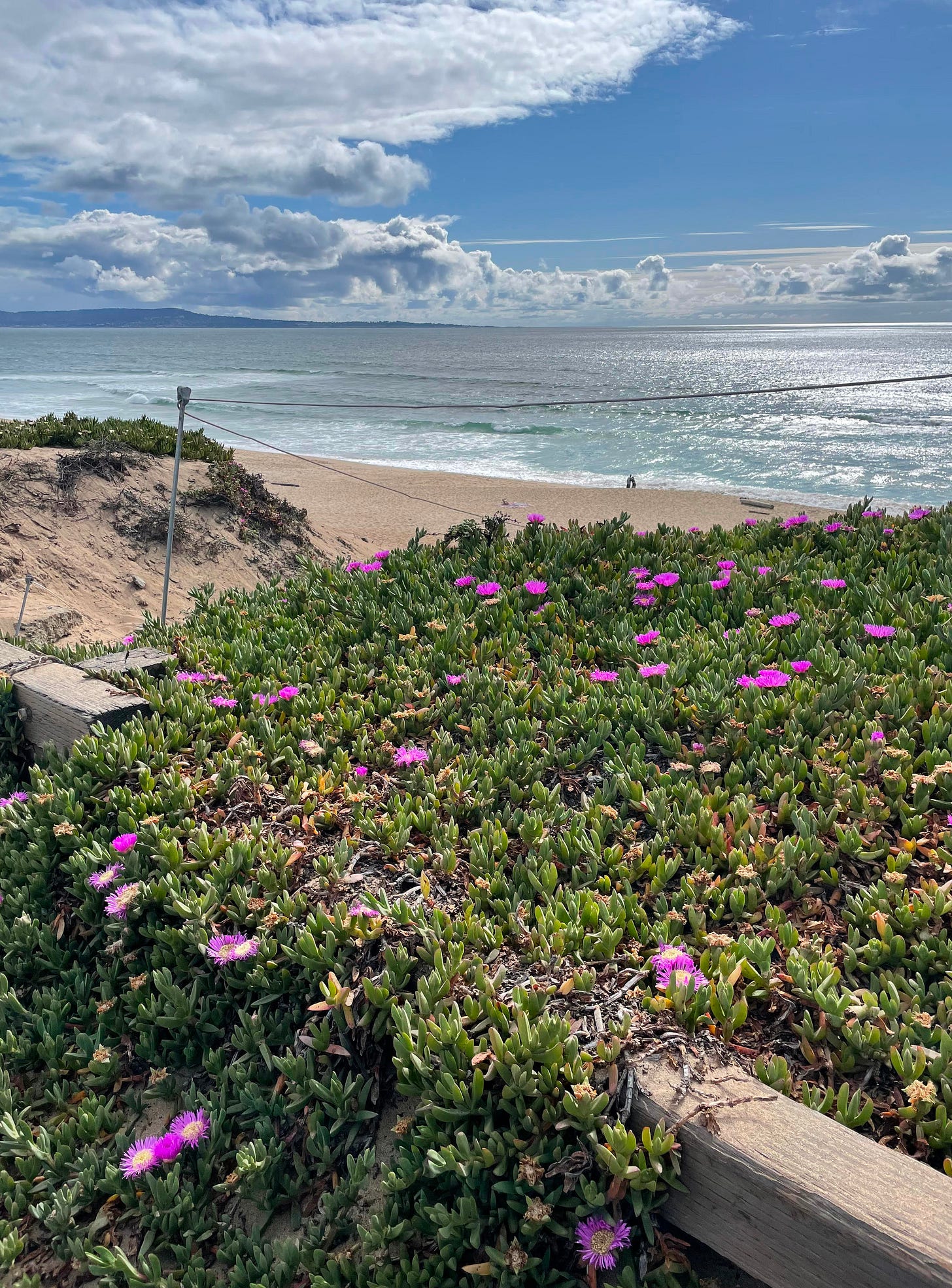
Aw velella velella! Thank you for writing about them, they are one of my favourite sea creatures! What a neat little species.
Good luck on your marathon!!!! 🏃♀️💨
Huh! As a Washingtonian I had heard that wallpaper photograph was taken in central WA. But looks like that was incorrect. TIL
Also never heard of the little invertebrate critter you found, but now I am prepared if I encounter them on one of our beaches!